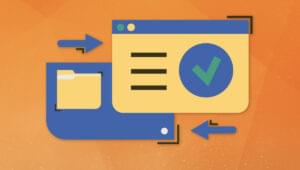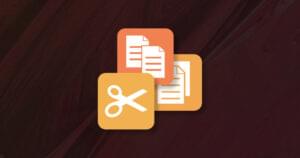- What are the required skills and knowledge needed to start working with React?
- How do I get started with React and what tools/equipment do I need?
- What are the basic concepts of React that I need to understand before starting a project?
- How do I install and set up React on my computer?
- What are components in React and how do I create them?
- How do I manage state and props in React?
- What is JSX and how do I use it?
- How do I handle user events in React?
- What are some best practices for coding in React?
- Frequently Asked Questions (FAQs) about ReactJS Best Practices
In this article, we’ll answer nine common questions you’re likely to find yourself asking when getting started with React.
What are the required skills and knowledge needed to start working with React?
Before diving into React, you should have a solid understanding of the following:
- HTML, CSS, and JavaScript (ES6): Familiarity with these core web technologies is essential for working with React.
- Basic understanding of the DOM (Document Object Model): React manipulates the DOM, so understanding its structure and how it works is important.
- Familiarity with Node.js and npm (Node Package Manager): These tools are used to manage dependencies and build React applications.
How do I get started with React and what tools/equipment do I need?
To get started with React, you’ll need:
- A modern web browser, such as Chrome, Firefox, or Safari
- A code editor, such as Visual Studio Code or Sublime Text
- Node.js and npm installed on your computer
What are the basic concepts of React that I need to understand before starting a project?
Before starting a React project, you should understand the following concepts:
- Components: The building blocks of a React application.
- State and Props: How data is managed and passed between components.
- JSX: A syntax extension for JavaScript that allows you to write HTML-like code within your JavaScript code.
- Lifecycle Methods: Functions that are called at specific points during a component’s life in the DOM.
- Event Handling: How to handle user interactions in a React application.
How do I install and set up React on my computer?
To install and set up React, follow these steps:
- Install Node.js and npm on your computer.
- Open a terminal or command prompt and run
npx create-react-app my-app(replacemy-appwith your desired project name). - Change to the newly created project directory using
cd my-app. - Run
npm startto start the development server and open the application in your web browser.
What are components in React and how do I create them?
Components are the building blocks of a React application. They are reusable, self-contained pieces of code that represent a part of the user interface. To create a component:
- Create a new JavaScript file with a
.jsextension. - Import React and any necessary dependencies.
- Define a function or class that returns a JSX element.
- Export the component for use in other parts of your application.
How do I manage state and props in React?
State and props are used to manage data in a React application:
State represents the internal data of a component. Use the useState hook for functional components or the this.state object for class components to manage state:
- Define initial state: determine the initial state of the component in the constructor method.
- Update state: use the
setState()method to update the state of the component. - Pass state to child components: pass the state down to child components through props.
- Avoid changing state directly: always use the setState method, never modify state directly.
Props represent the data passed to a component from its parent. Access props using props in functional components or this.props in class components:
- Define props: define props in the parent component and pass them down to child components.
- Accessing props: access props in the child component through the
this.propsobject. - Props are read-only: components should not modify their
What is JSX and how do I use it?
JSX is a syntax extension for JavaScript that allows you to write HTML-like code within your JavaScript code. It makes it easier to create and manage the structure of your components. To use JSX:
- Write HTML-like code within your JavaScript code, enclosed in parentheses.
- Use curly braces
{}to embed JavaScript expressions within your JSX code.
How do I handle user events in React?
To handle user events in React:
- Define a function that will be called when the event occurs.
- Attach the function to the event using the appropriate event handler attribute (such as
onClick,onChange,onSubmit). - Use the event object passed to the function to access information about the event and update the component’s state or props as needed.
Let’s take a look at an example. To handle user events in React, you can use the onClick attribute. Here are the steps you can follow:
- Create a function that handles the event.
- Pass the function to the
onClickattribute of the element you want to handle the event for.
For example, if you want to handle a button click event, you can use the following code:
import React from 'react';
function handleClick() {
console.log('Button was clicked!');
}
function App() {
return (
<div><button>Click me!</button></div>
);
}
export default App;In this example, when the button is clicked, the handleClick function will be called and the message Button was clicked! will be logged to the console.
Pass arguments to the function if necessary. You can pass arguments to the function by wrapping the function call inside an anonymous function.
For example, if you want to pass the button’s ID to the handleClick function, you can use the following code:
function handleClick(id) { console.log('Button with ID ' + id + ' was clicked!'); }
function App() { return (
<div><button> handleClick(1)}>Click me!</button></div>
); }
export default App;In this example, when the button is clicked, the handleClick(id) function will be called with the argument 1 and the message Button with ID 1 was clicked! will be logged to the console.
That’s it! You now know how to handle user events in React using the onClick attribute. Remember to create a function that handles the event and pass it to the onClick attribute of the element you want to handle the event for. You can also pass arguments to the function by wrapping the function call inside an anonymous function. With this knowledge, you can now create interactive web applications using React.
What are some best practices for coding in React?
Some best practices for coding in React include:
- Keep components small and focused on a single responsibility.
- Use functional components and hooks when possible.
- Keep state management as close to the component that needs it as possible.
- Use PropTypes to validate the types of props passed to components.
- Organize your project structure logically and consistently.
- Write clean, well-documented code and follow established naming conventions.
- Optimize performance by using techniques like memoization, lazy loading, and virtualization when necessary.
- Write unit tests for your components to ensure their functionality and reliability.
- Use version control systems like Git to track changes and collaborate with other developers.
- Continuously learn and stay up to date with the latest React features, best practices, and community recommendations.
Frequently Asked Questions (FAQs) about ReactJS Best Practices
What are the key benefits of using ReactJS?
ReactJS is a popular JavaScript library used for building user interfaces, particularly for single-page applications. It allows developers to create reusable UI components, which can significantly speed up development time. ReactJS also uses a virtual DOM that optimizes rendering and improves app performance. Moreover, it supports server-side rendering, which can help improve the SEO of web applications. Lastly, ReactJS has a strong community support and a wealth of resources available, making it easier for developers to find solutions to problems they may encounter.
How does ReactJS handle data flow?
ReactJS follows a unidirectional data flow or one-way data binding. This means that when designing a React application, data has one, and only one, way to be transferred to other parts of the application. This data flow control makes the application more flexible and efficient, and it’s easier to debug as the data changes are more predictable.
What are React Hooks and why are they important?
React Hooks are functions that let you use state and other React features without writing a class. Introduced in React 16.8, Hooks have become a game changer in React development. They allow you to reuse stateful logic between components without changing your component hierarchy. This makes your components more readable and easier to test.
How can I improve performance in ReactJS?
There are several ways to optimize performance in ReactJS. One common method is to use the shouldComponentUpdate lifecycle method to prevent unnecessary re-renders. Another is to use React.memo for functional components, which is similar to PureComponent for class components. You can also use the Profiler API to measure the “cost” of rendering and identify bottlenecks in your application.
What is JSX and why is it used in ReactJS?
JSX stands for JavaScript XML. It is a syntax extension for JavaScript, used by React to describe what the UI should look like. JSX produces React “elements” and makes it easier to write and add HTML in React. It also allows you to write HTML-like syntax in your JavaScript code, which makes the code easier to understand and maintain.
How does ReactJS handle events?
ReactJS has its own event system which is fully compatible with the W3C object model. React’s synthetic event system ensures that the events have consistent properties across different browsers. You can attach event handlers to components in ReactJS using a camelCase naming convention.
What is the significance of keys in React?
Keys in React are used to identify unique elements in the DOM. They are important in the reconciliation process, the algorithm used by React to diff one tree with another to determine which parts need to be changed. Providing a key helps React identify which items have changed, are added, or are removed and gives it hints to perform fewer operations.
What is the context API in ReactJS?
The Context API in ReactJS is a way to pass data through the component tree without having to pass props down manually at every level. It’s designed to share data that can be considered “global” for a tree of React components.
How can I use third-party libraries with ReactJS?
ReactJS can be used with any third-party libraries or frameworks. You can install them via npm or yarn and import them in your components. However, you should be careful when using third-party libraries as they may not align with React’s virtual DOM mechanism.
What are the best practices for error handling in ReactJS?
Error boundaries are a great way to handle errors in ReactJS. They are React components that catch JavaScript errors anywhere in their child component tree, log those errors, and display a fallback UI instead of the component tree that crashed. You can use static getDerivedStateFromError() and componentDidCatch() lifecycle methods to catch errors.
 Matt Mickiewicz
Matt MickiewiczMatt is the co-founder of SitePoint, 99designs and Flippa. He lives in Vancouver, Canada.




